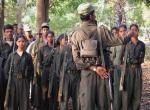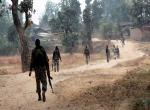Naxalites of the Communist Party of Maoist [CPI (Maoist)], Maoists in short, seem to be resurfacing in Karnataka. The killing in an encounter of Vikram Gowda, on November 18, 2024, in Eedu village, Karkala taluk of Udupi district, further confirms this emerging trend. Gowda had multiple extortion and criminal cases registered against him. During the encounter, the ANF personnel recovered a .9 mm calibre gun from his possession. He was one of the most wanted Maoist leaders from Karnataka against whom 61 cases were registered in Karnataka and another 19 in Kerala. Gowda carried a cumulative reward of Rs 25 lakh in Karnataka and Kerala.
Earlier, four cadres of the CPI (Maoist) were reportedly sighted in Malnad forests near Koppa and Sringeri, on November 10, 2024. Cases were booked against three persons under various sections of Bharatiya Nyaya Samhita (BNS), Arms Act and Unlawful Activities Prevention Act (UAPA) for providing shelter to the Maoists and some arms and live recovered from them. Prasanna, an activist said encroachment of forest land, non-implementation of Kasturirangan Report could be the reason for Naxal/Maoist activity.
The Maoists did not surface all of a sudden in Karnataka. Initially, they had sought safe havens in places in the state, including in the capital Bangalore. They also operated in some limited pockets but maintained a low profile. For instance, reportedly, three central committee members of the erstwhile People’s War Group (PWG) were arrested from a house in Bangalore in December 1999. Furthermore, Naxalite ideologue Varavara Rao addressed public meetings in the Chikmaglur area in early 2003 and balladeer Gaddar (since deceased) reportedly addressed a closed-door meeting of intellectuals in Mangalore in August 2004.
Beginning here and in Kolar, Bidar, Gulbarga, and Raichur districts in the late-1980s, the Maoists gradually extended their presence to Bellary Shimoga, Udupi, Chikmagalur and Dakshin Kannada, while Hasan and Kodagu reported marginal presence. At that time, they had highlighted the government’s failure in providing basic amenities (such as drinking water and health care) and implementing development activities (such as laying roads and irrigation facilities), as well as providing employment opportunities, to win the support of the masses. Besides, villagers were mobilised on the Kudermukh National Park issue and exploitation by landlords.
The first major encounter between the rebels and police personnel occurred in Singasaru village, Chikkamagaluru district. Later, in November 2003 another encounter was reported in Eedu village, Dakshin Kannada district out of which Udupi district was carved out. Maoist activities decreased after the killing in an encounter of Saket Rajan, Karnataka State Committee Secretary in February 2005 and an encounter later in the area in October 2007.
Besides, there was split in the Karnataka unit of the Maoists on whether focus should be accorded to building the urban movement or spread in rural areas. The majority opinion (focusing on urban movement) prevailed. According to a well-known authority on the Maoist movement, the then Karnataka State Committee Secretary, Sundararajan, insisted that the focus of the Maoists should be on urban areas and, owing to differences with the other members of the State Committee, he split the outfit vertically, walking away with nearly two-thirds of the total strength of the State unit. A media report of that time said the police suspected that a group known as the Karnataka Communal Harmony Group (KCHG), a congregation of intellectuals and activists, was a Maoist front. Apparently, top police officials visited the famous Jesuit college––St Joseph’s–– to investigate the involvement of students with KCHG.
Shedding aside earlier vacillation, the government has put in place a mechanism of security and development. It constituted the Anti Naxal Force. An array of development programmes are also being implemented. Besides, Karnataka has introduced a ‘special surrender policy’ in 2024 that provides a rehabilitation package for Maoists willing to abandon their ideology and join the mainstream. However, it is interesting to note that not a single surrender has taken place after the new package was introduced. It envisages a cash reward of a maximum of Rs 7.5 lakh depending upon the degree of involvement in violent activities, while cases of criminal offences filed against them shall not be annulled. The government could assure those willing to surrender that it would be sympathetic while pursuing their cases.
It is believed that the number of armed Maoists in Karnataka would be a handful. There can be no complacence on the part of the government in forestalling the resurgence of the Maoists. The government should actively encourage them to surrender. The authorities would also need to keep a close watch on urban centres to thwart possible urban presence.
The Maoists seem to be following a known pattern of regrouping and resurfacing in areas from where they have been ejected or have slipped away. Karnataka needs to prevent the State from once again slipping into an active Maoist area. This becomes all the more pertinent as the Union Home Minister announced that the country would be free of Maoist activities by end-April 2026.
(The paper is the author’s individual scholastic articulation. The author certifies that the article/paper is original in content, unpublished and it has not been submitted for publication/web upload elsewhere, and that the facts and figures quoted are duly referenced, as needed, and are believed to be correct). (The paper does not necessarily represent the organisational stance... More >>
Image Source: https://mcmscache.epapr.in/post_images/website_326/post_41031323/full.jpg











Post new comment